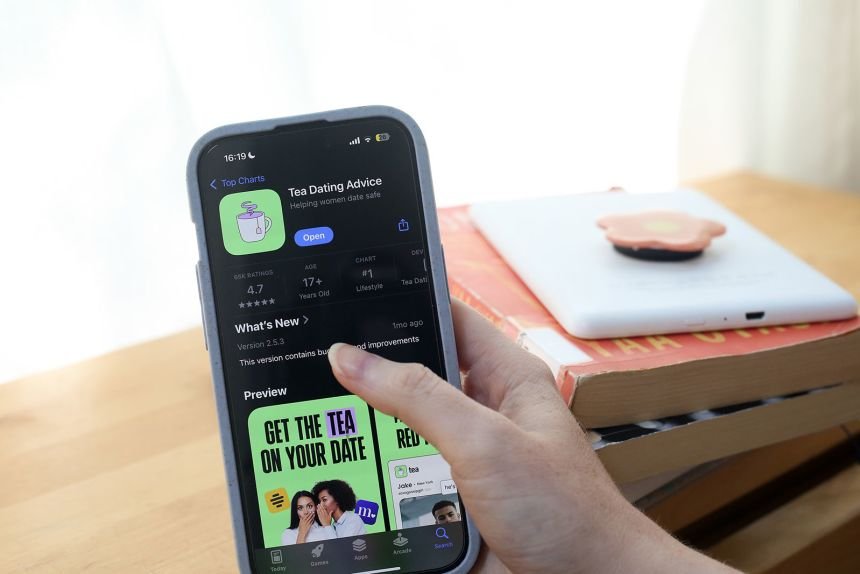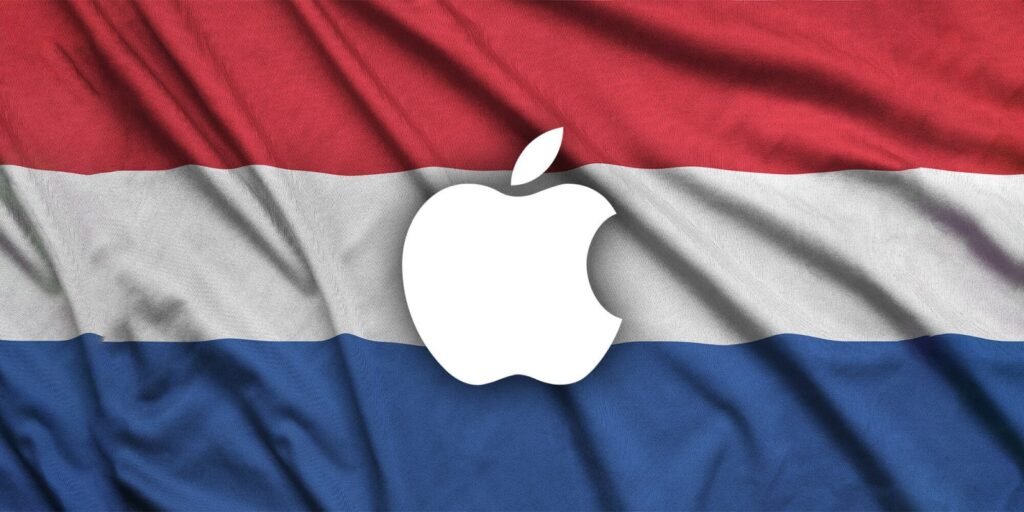Expert’s Rating
Pros
- Speedy performance
- Huge 6600mAh battery
- Fluid, unobstructed display
- Top dust and waterproofing
Cons
- Minor difference to Z70 Ultra
- InConsistent camera
- Software still a little clunky
- Unknown software support
Our Verdict
The Nubia Z70S Ultra is another compelling combination of high-end specifications and mid-market pricing. It’s fast, packs epic stamina, a responsive display, and camera that’s capable of good things. However, it’s extremely similar to the six-month-old Nubia Z70 Ultra and features many of the same flaws. This is a decent phone, but did it need to exist?
Price When Reviewed
This value will show the geolocated pricing text for product undefined
Best Pricing Today
Best Prices Today: Nubia Z70S Ultra

Earlier this year, the Nubia Z70 Ultra provided us with an early glimpse at the performance potential of Qualcomm’s Snapdragon 8 Elite chip. What was really remarkable was that it managed to do so at a sub-flagship price without too many overt compromises.
It was a worthwhile advance over the Nubia Z60 Ultra before it, which made me intrigued to consider the Nubia Z70S Ultra. If the brand can further refine this formula without pumping up the mid-range price, we could get closer to that true flagship killer status that several smaller brands have been vying for.
At first glance, however, it’s difficult to see what’s changed. The big, blocky design is much the same, albeit with a new vintage camera finish. There’s also the same Snapdragon 8 Elite chip onboard.
However, the battery has gotten bigger, and there are a couple of noteworthy tweaks to the camera set-up.
So, is the Nubia Z70S Ultra a better phone than the Nubia Z70 Ultra? Does it even need to exist?
Design & Build
- Similar slab-like design to Z70 Ultra
- IP68/69 certification
- Dedicated camera button and mappable slider
Unsurprisingly, given its S-status, the Nubia Z70S Ultra looks and feels an awful lot like the Z70 Ultra. It’s the same basic design, with the same bulky dimensions (164.3 x 77.1 x 8.6mm) and weight (228g).
It remains distinctive from other smartphones, however, with its large square camera module and signature flashes of red. If anything, Nubia has made the Z70S Ultra look more like a retro camera than it did before, with a faux-leather finish and a silver metal-effect band across the main camera.
I like the concept of using such beautiful and tactile devices as inspiration
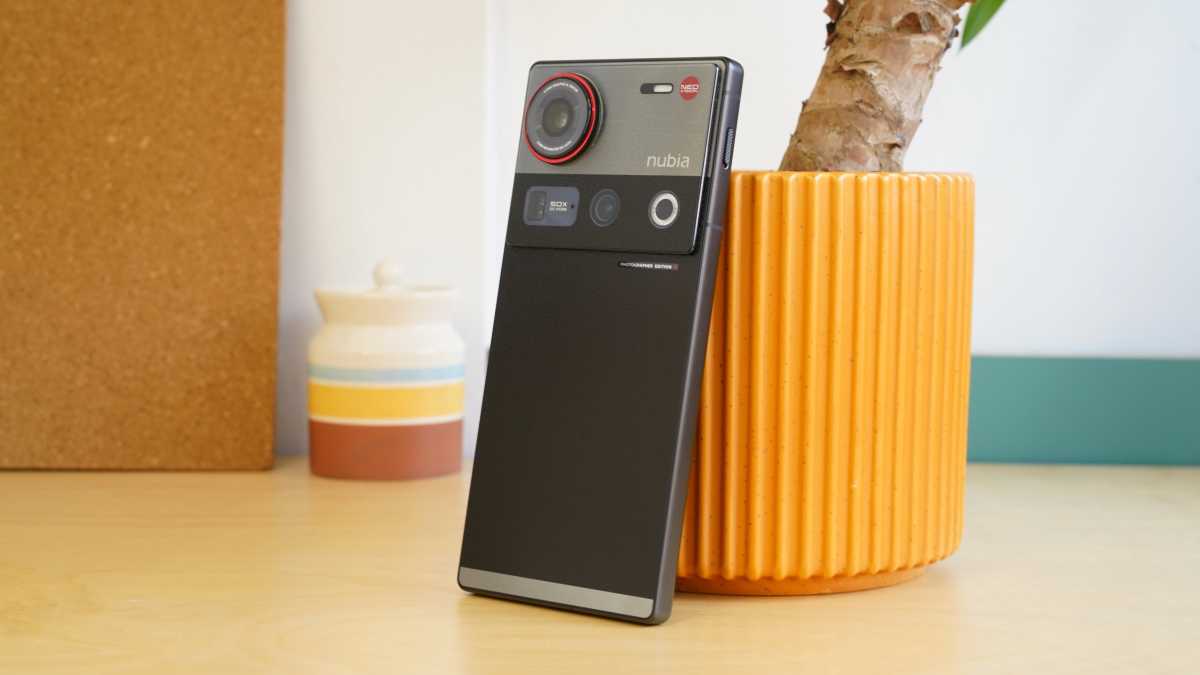
Jon Mundy / Foundry
The model I’m using is the Classic Black, but the Antique Brown version (only available on the top spec) looks even more like a classic camera.
All in all, I like the concept of using such beautiful and tactile devices as inspiration, but I’m not so sure Nubia has quite nailed the brief. It doesn’t quite have that finely machined look or feel to it, though the return of a combined IP68 and IP69 rating certainly suggests it’s built well.
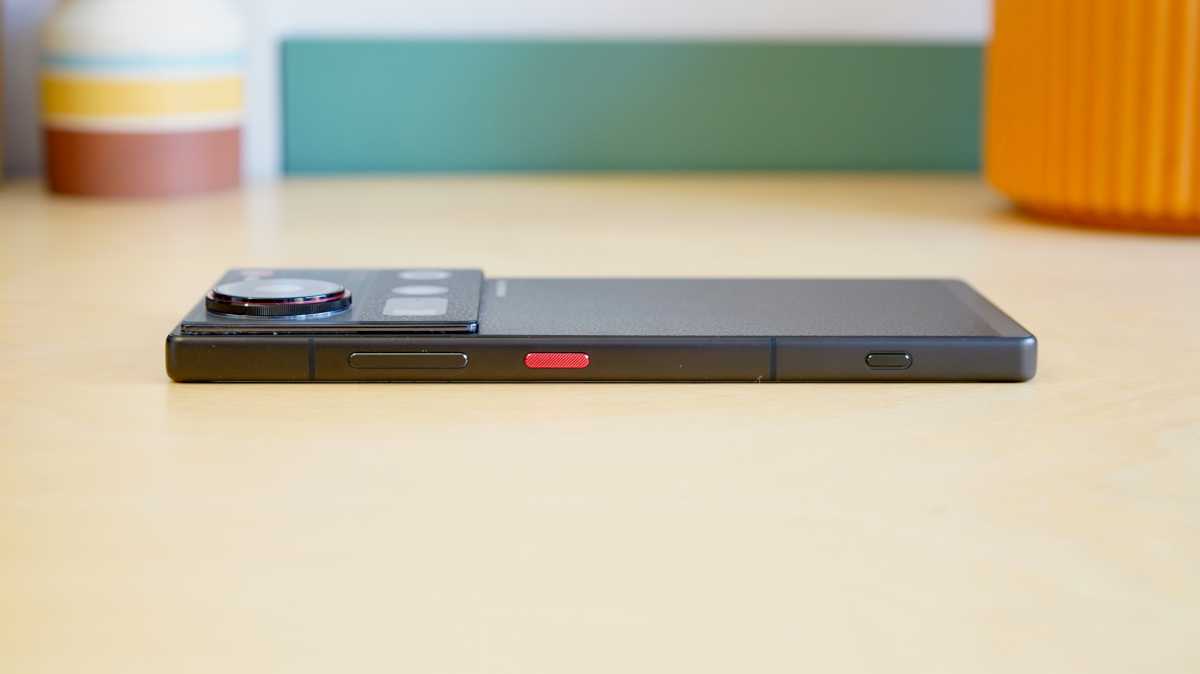
Jon Mundy / Foundry
Going back to that idea of tactile controls, the two extra hardware buttons from the Z70 Ultra make a return. There’s a dedicated two-stage camera shutter button on the right edge (in a much more natural position than the iPhone 16’s Camera Control), and a slider switch on the left-hand edge.
It’s set to launch the camera by default, though this still feels like a waste when the aforementioned shutter button does the same thing. It’s best remapped to a mute switch function, I found, or to the torch.
Screen & Speakers
- 6.85-inch 1.5K AMOLED display
- Rapid 144Hz peak refresh rate
- Stereo speakers
The Nubia Z70 Ultra’s 6.85-inch AMOLED display represented a considerable improvement over that of the Nubia Z60 Ultra, so it’s neither a surprise nor a complaint to say that there have been no changes.
This is exactly the same panel, with the same 1216 x 2688 (aka 1.5K) resolution, and the same eye-catchingly rapid 144Hz refresh rate.
Perhaps the most striking thing about all of these Nubia phones is the lack of a display notch to get in the way
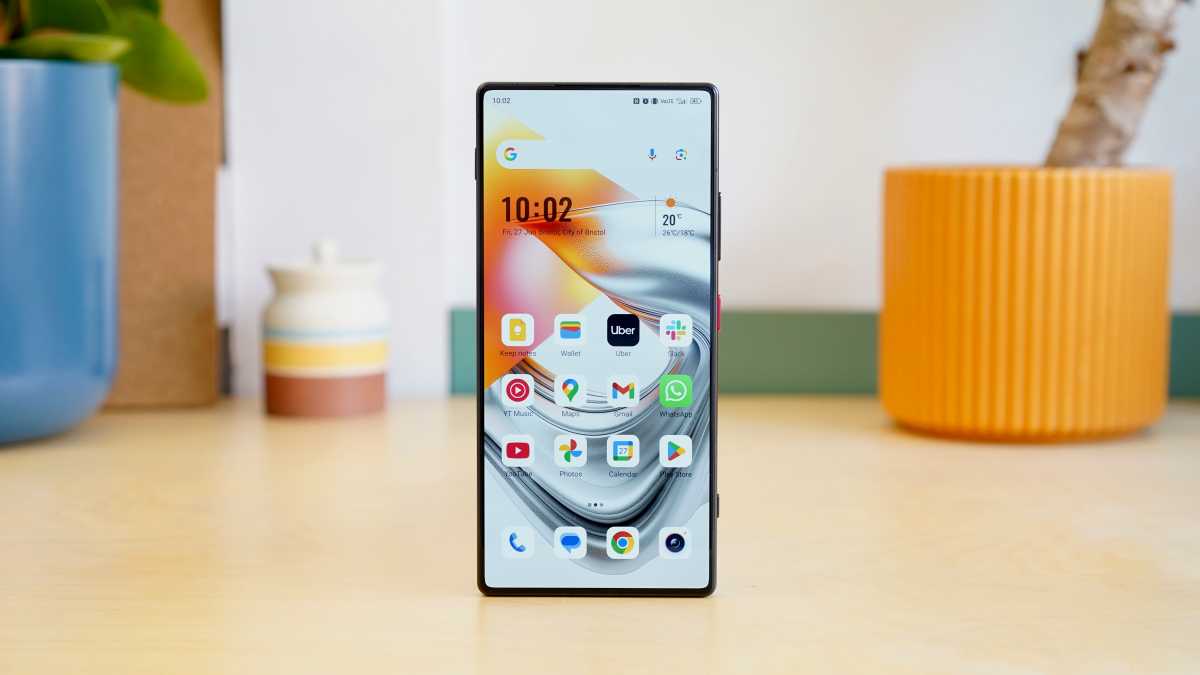
Jon Mundy / Foundry
The latter has always come across as a bit of a gimmick to me. Even on dedicated gaming phones, where such an inclusion is arguably justified, the vast majority of games won’t take advantage of this speedy refresh rate.
You’re still getting a peak brightness of 2000 nits in HDR situations. It’s nowhere near the top of the smartphone league table, but should still prove ample on bright days.
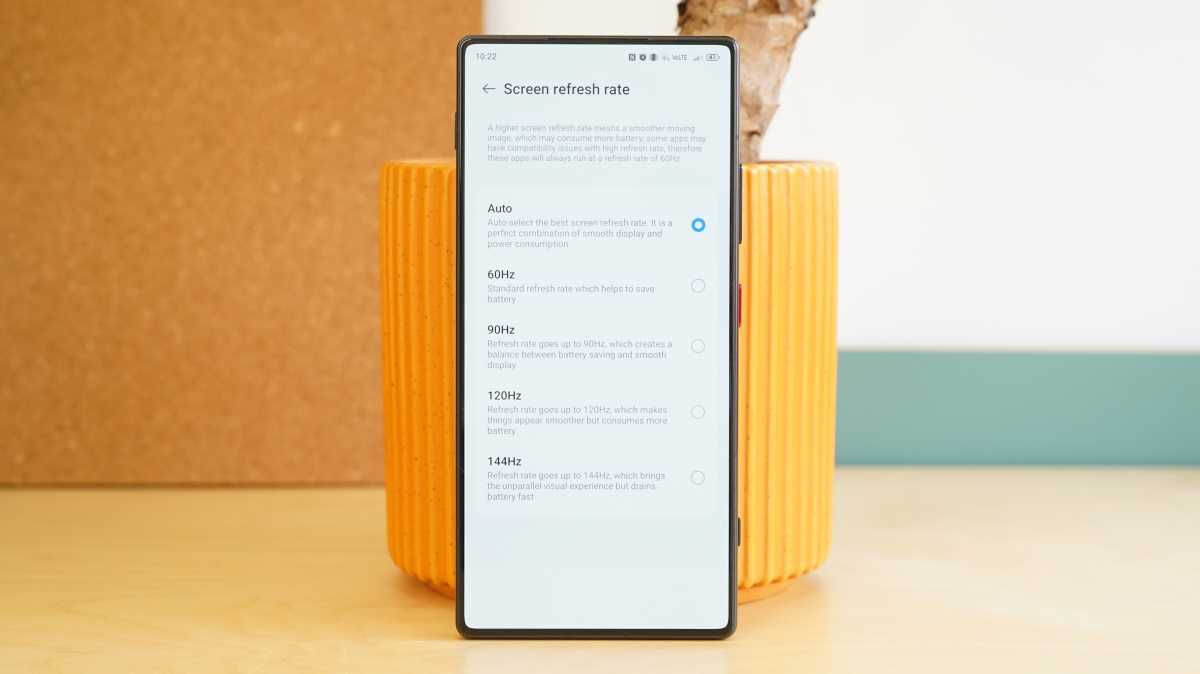
Jon Mundy / Foundry
Perhaps the most striking thing about all of these Nubia phones is the lack of a display notch to get in the way of your media content. An under-display front camera might well wreck your selfies (more on that later), but it also makes for the most blissfully unimpeded picture this side of the Sony Xperia 1 VII.
Stereo speakers make a return, one of which is downward-facing facing like many phones. They’re not elite level, and they’re a little lacking in low-end rumble, but they get sufficiently loud and clear.
Specs & Performance
- Powered by Snapdragon 8 Elite
- Up to 16GB RAM and 512GB storage
- Exactly the same top performance
Usually, when you think of an ’S’ phone, you expect something in the way of a performance bump over the original. Not so here.
The Nubia Z70S Ultra runs on exactly the same Snapdragon 8 Elite – and not even the Leading Version that has made its way into Nubia’s latest gaming phone, the Redmagic 10S Pro. I’m a little surprised about this.
If anything, this is a slight (and I do mean slight) downgrade, with 24GB of RAM no longer an option. All you get is the choice of 12- or 16GB, but that’s plenty.
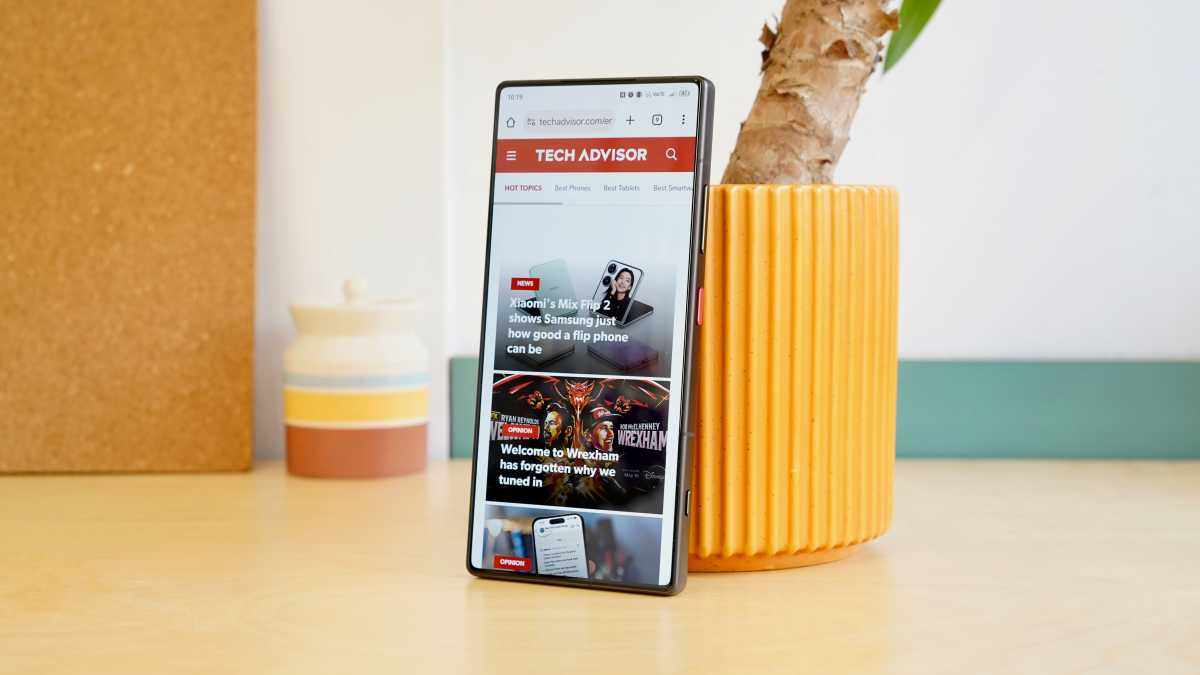
Jon Mundy / Foundry
In practical terms, none of this makes a jot of difference. This is another speedy performer, with benchmark test results landing exactly where we’d expect them to – right up there with the OnePlus 13 and the Samsung Galaxy S25 Ultra.
Judging GPU performance is trickier, as Nubia phones invariably underperform on GFX Bench. It’s evidently something to do with how their phones interface with the app rather than any GPU issue, as the phone scores well on other GPU tests, and runs high-end 3D games impeccably, so bear this in mind when looking at the chart below.
When it comes to sustained performance, the Nubia Z70S Ultra overheated and crashed in the 3DMark Solar Bay Stress Test. You’ll be better off with the Redmagic 10S Pro (also from Nubia) with its physical cooling fan if you want outstanding sustained gaming performance.
Nubia Z70S Ultra benchmarks
Camera
- Larger 50Mp main camera, no variable aperture
- 64Mp 3.3x telephoto
- 50Mp ultra-wide
- Bad 16Mp in-display selfie cam
There are two key ways in which the Nubia Z70S Ultra differentiates itself from its predecessor, and one of those relates to its main camera.
It still packs a 50MP sensor, but this time it’s larger at 1/1.3-inch (vs 1/1.56-inch in the Z70 Ultra). Larger sensors, of course, allow more light in, which has positive repercussions for night shots and general image quality.
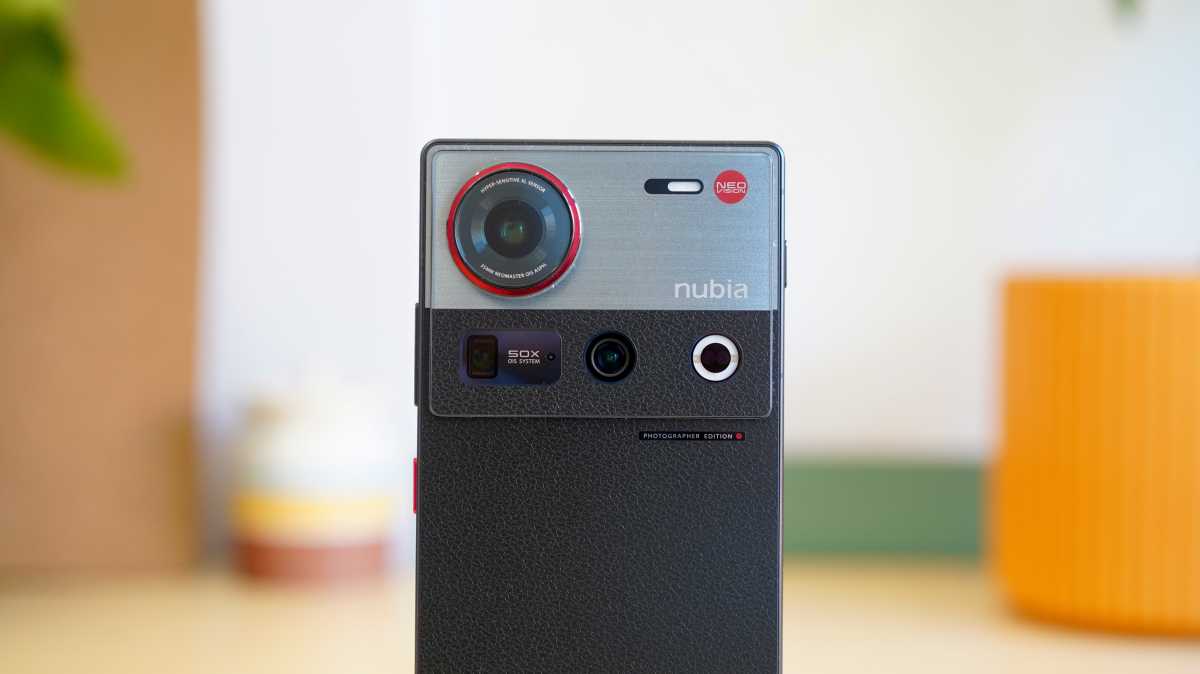
Jon Mundy / Foundry
This new sensor loses the Z70 Ultra’s variable aperture, so it’s fixed at f/1.7. That always seemed like a bit of gimmick to me, so it’s no great loss.
I’d love to say that image quality has taken a massive step forward, but I’d still say that it’s just fine. In ideal lighting conditions, it can capture sharp, vibrant shots. The colours are perhaps a little on the exaggerated side, but it’s a look that a lot of people like.
However, I found the camera to be a little inconsistent, occasionally flubbing a shot completely. One close-up of some pink flowers provided an extremely grainy shot with horribly oversaturated flowers. As with the Z70 Ultra, I wonder if the AI shot selector – which is active by default – is quite up to scratch here.
Night mode kicks in automatically, by default, and produces solid detail and a reasonably natural level of shade in low lighting.
The 64MP telephoto combines with that main sensor to create some sharp, balanced shots at low zoom ranges (think 2x or 5x), but things get quite ugly at more extreme hybrid zoom lengths.
As for the 50MP ultra-wide, the results are heavily processed-looking, with blasted out highlights. Tonally, it’s a mile away from that main sensor.
Selfie shots are a write-off. It’s the same 16MP sensor as before, but the crucial detail is that it’s again situated under the display, which badly compromises the amount of light that gets through, resulting in muddy, soft shots. I haven’t seen this technique yield even halfway decent results yet, and the Z70S Ultra doesn’t change that. They’re not as bad as they used to be, but that’s not saying much.
Selfie shots are a write-off
Nubia’s Camera UI is also a bit of a mess. The mode dial is overloaded (did we really need Photo, Street, and Pro options?), and the company confusingly mixes its classic photographic language (eg 35mm focal length) with its more modern lingo (1.4x). You also have annoying watermark and beautification settings active by default, requiring you to dive into the menus to clean things up.
Given the price of the phone, the Nubia Z70S Ultra is capable of taking reasonably solid shots, and offers more shooting options than most. Given the focus on its photographic capabilities, however (Photographer Edition is emblazoned on the rear cover), it’s a little more inconsistent than I would have liked.
Battery Life & Charging
- 6600mAh battery
- 80W wired charging
- No charger in the box
- No wireless charging
Other than the main camera, the other noteworthy hardware change here is the Z70S Ultra’s battery size. The Z70 Ultra’s 6150mAh cell was hardly small, but here you get an expanded 6600mAh battery.
This doesn’t lead to a massive improvement in stamina, but then, such a thing wasn’t needed. The long and short of it is that you’ll be able to get two full days of normal usage out of the Nubia Z70S Ultra with little worry.
Elsewhere, a PCMark Work 3.0 battery test score of 9 hrs 12 mins remains a relatively poor result – less than half the Samsung Galaxy S25 Ultra, and more than five hours short of the OnePlus 13. But it still represents progress at almost an hour longer than the Nubia Z70 Ultra managed.
There’s support for speedy 80W charging again, but Nubia no longer gives you a charger in the box
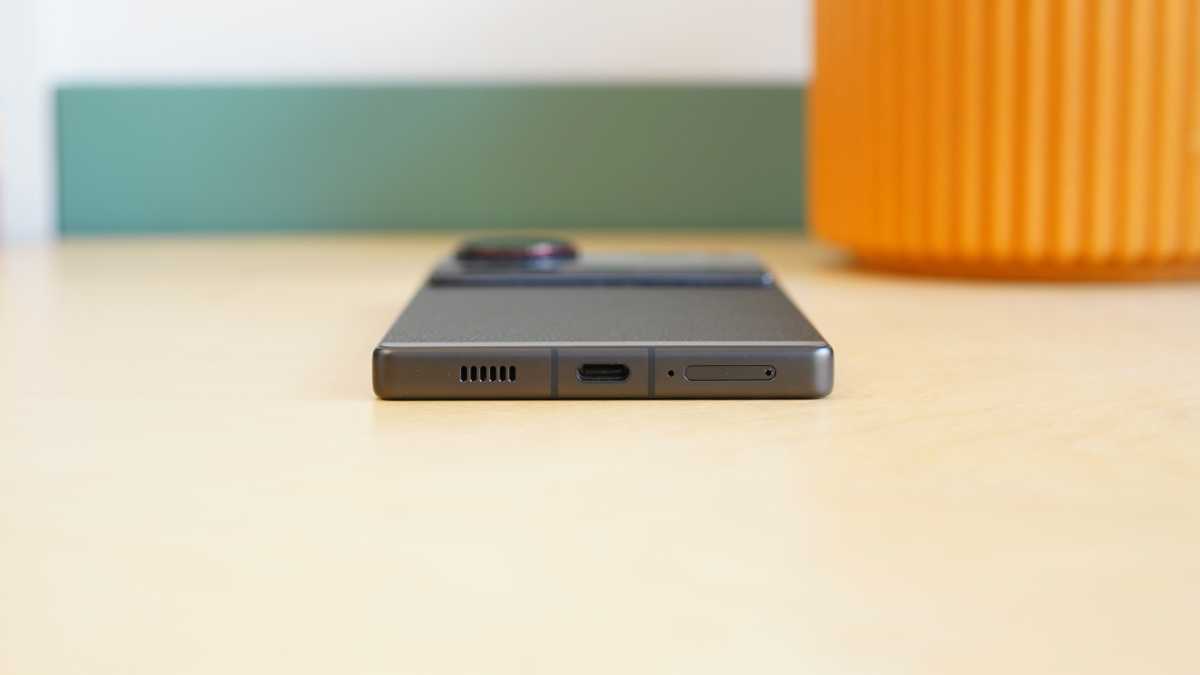
Jon Mundy / Foundry
There’s support for speedy 80W charging again, but Nubia no longer gives you a charger in the box. You’ll need to supply that yourself. Fortunately, I had one of the company’s bricks to hand, and found that a 15-minute charge got the phone to 31%, while 30 minutes took it to 57%.
A full charge takes around an hour. All of which is just a little slower than the Nubia Z70 Ultra, as you’d expect with a bigger fuel tank to fill.
Nubia still doesn’t support wireless charging, which is a bit of a shame. Again, though, we need to keep in mind the price of this phone. This is one of the compromises that Nubia has made to be able to hit that.
Software
- Android 15 with Nebula AIOS 1.5
- Google Discover feed back onboard
- Few AI tools
Nubia made a fresh start of sorts with the Z70 Ultra, dropping its old MyOS UI for Nebula AIOS. It felt like little more than a renaming exercise like Xiaomi’s HyperOS, however, with many of the same characteristics and flaws as before.
The fact that the Nubia Z70S Ultra arrives only six months later doesn’t offer too much expectation of change. Sure enough, the OS here is labelled as Nebula AIOS 1.5 rather than Nebula AIOS 2.0, and it’s once again sat on Android 15.
a UI that runs fast and stable, but that lacks the stylish, modern edge of Google’s stock Pixel UI or even Samsung’s One UI
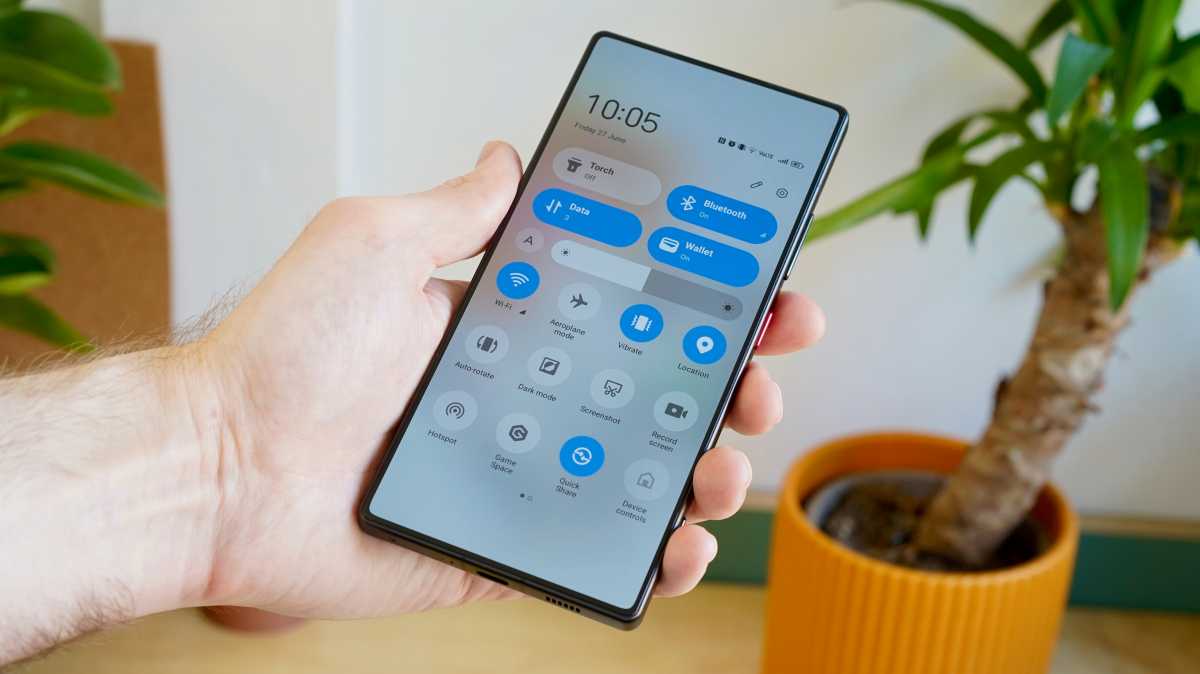
Jon Mundy / Foundry
Most of my comments concerning version 1.0 apply here. This is a UI that runs fast and stable, but that lacks the stylish, modern edge of Google’s stock Pixel UI or even Samsung’s One UI.
There are rough edges, like an ugly fingerprint authentication prompt that almost looks like a placeholder, or Chinese text appearing in the camera UI – though the latter appears to have been removed with a subsequent update.
One big improvement from Nubia is the replacement of its awful Z-board screen to the left of the Home Screen with the standard Google Feed.
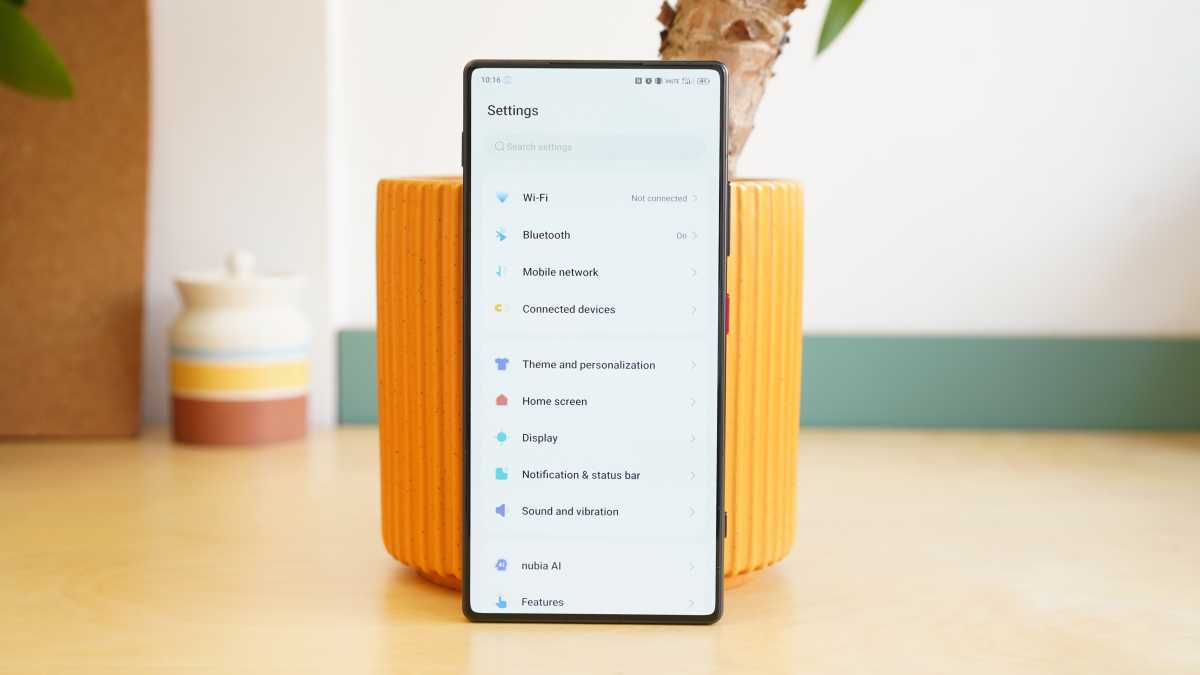
Jon Mundy / Foundry
Nubia’s AI implementation isn’t as extensive as most of its direct rivals, and gets nowhere near Google or Samsung. Besides some expected image enhancement tools in the camera app there’s AI Translate – an experimental real time translation tool that’s free but time-limited.
Nubia doesn’t specify how many updates it’s going to be supplying with the Z70S Ultra, but it doesn’t have a strong track record in this regard so don’t expect the kind of seven year OS support you’d get from Samsung and Google.
Price & Availability
There’s been a minor bump in price over the Nubia Z70 Ultra, but the Z70S Ultra remains excellent value. It starts from £659 for the model with 12GB of RAM and 256GB of storage.
That’s £10 more than the Nubia Z70 Ultra sold for, and indeed continues to sell for at the time of writing, confusingly.
Bumping things up to 16GB of RAM and 512GB of storage will cost you £769, which is a £20 increase on the Z70 Ultra equivalent. There is no 1TB model this time around.
Both models are available directly from Nubia’s website in the UK (but not the US this time, it seems), as well as Amazon UK.
As before, no networks are offering the phone on contract, so you’ll need to buy it outright and pair it with a SIM-only deal.
In terms of competition around this price, you might consider the Poco F7 Pro, Nothing Phone (3), Redmagic 10S Pro and the OnePlus 13R.
Check out our list of the best mid-range phones to see all the top options right now.
Should you buy the Nubia Z70S Ultra?
The Nubia Z70S Ultra is another highly capable, well-specced-out phone at an upper-mid-range price. However, I’m at a loss to explain the reason for its existence.
In a blog post on the difference between its two most recent flagship phones, even Nubia struggles to make a case for the Z70S Ultra, vaguely referring to it as a “premium tactile experience” and “a conversation starter”.
In the other camp, the Z70 Ultra offers “the best of modern smartphone tech: display, performance, camera versatility, and all-day power”. That last line highlights the problem, as the Z70S Ultra has the exact same display and processor and an even bigger battery.
Aside from some tweaks to the camera – which still struggles with consistency and a terrible selfie cam – that’s it for upgrades.
If the brand itself can’t put up a convincing argument for the Nubia Z70S Ultra’s existence, I’m not sure I can. All I can say is that this is a good phone at a good price, but one that arguably didn’t need to exist.
Specs
- Android 15 with Nebula AIOS 1.5
- 6.85in, 1.5K, OLED, 144Hz, flat display
- In-display fingerprint sensor
- Qualcomm Snapdragon 8 Elite
- 12GB/16GB/24GB LPDDR5X RAM
- 256GB/512GB/1TB storage
- 50Mp, f/1.7 main camera
- 50Mp ultra-wide camera
- 64Mp telephoto camera
- Up to 8K @ 30fps rear video
- 16Mp front-facing camera
- Stereo speakers
- Dual-SIM
- Wi-Fi 802.11 a/b/g/n/ac/ax/6e/7
- Bluetooth 5.4
- 6600mAh battery
- 80W charging
- 164.3 x 77.1 x 8.6 mm
- 228g
- Launch colours: Antique Brown, Classic Black


